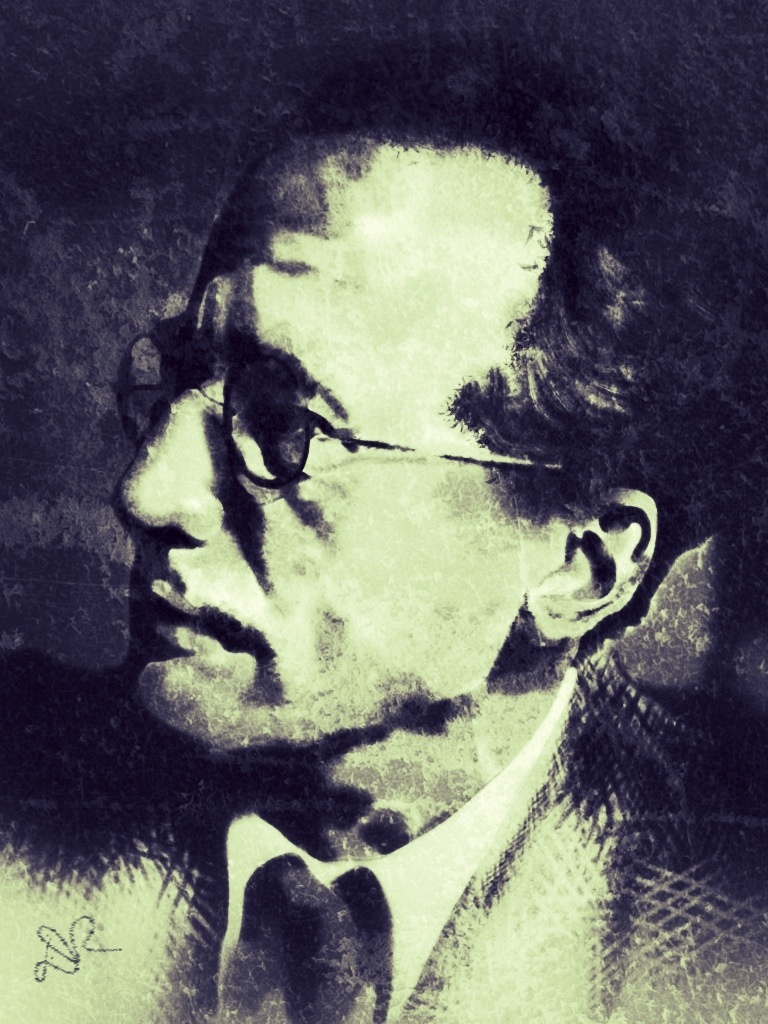Schrodinger’s World
Erwin Schrodinger was a physicist working in the early decades of the 20th century. Like other physicists of his day, including Heisenberg and Einstein, he was wrestling with fundamental differences between classical physics and quantum physics. The quantum theory of physics was developed to address some of the apparent shortcomings of classical physics. Classical physics works well when describing nature in everyday experience. However, it is inadequate when dealing with nature at the sub-atomic level. Particles such as electrons and protons behave in surprising ways that were not predicted by classical physics. For example, the nature of light is a basic question in physics, but stirred debate and controversy for decades among physicists because they struggled to come to terms with its seemingly dual nature.

Particle or Wave
Schrodinger was in the middle of the debate, working on calculations that would, among other things, illuminate the problems posed by the composition of light. The problem is that light, as a form of electromagnetic radiation, sometimes behaves like a particle and sometimes behaves like a wave, depending on the circumstances. Schrodinger’s work resulted in a modification of Isaac Newton’s second law of motion, which describes the following relationship: force (F), equals mass (m) multiplied by acceleration (a) or F = ma. Building on this, Schrodinger’s equation addresses the wave aspect of matter by including a wavefunction, a mathematical construction that helps to describe the propagation of the wave behavior of particles. When putting Schrodinger’s equation into perspective, one physicist said, “It’s the most fundamental equation in quantum mechanics.”
An Equation and a Cat
The equation advanced quantum physics because it helped to describe reality more accurately than classical physics could alone. However, it is sometimes difficult to make complex mathematical concepts concrete. Schrodinger came up with a thought experiment to help illustrate the problems with the parts of quantum theory his equation addressed. Some physicists argued that quantum theory showed that a “…particle exists in all states at once until observed.” This does not make sense based on the reality people observe in their lives, as Schrodinger pointed out. He imagined a cat in a sealed box with a sample of radioactive material, a Geiger counter, and a bottle of poison. If the Geiger counter detects decay in the radioactive sample, the poison is released, killing the cat. Alternatively, if the decay is not detected, the cat remains alive. Can the cat be both alive and dead in the box until it is opened? Schrodinger argued this just is not the way things work, even if theories imply that it is.
Schrodinger’s Equation in Perspective
For physicists, the crux of Schrodinger’s equation is the wavefunction in its solution. It describes how a system will behave over time. This does not mean it can predict a single outcome—for example, the exact position of a particle at a specific time. However, given a large number of events, it can determine the probability of certain outcomes. Physicists argue about the nature of Schrodinger’s wavefunction and its role in quantum mechanics. Some describe it as a strange but realistic description of the behavior of subatomic particles, while others maintain it is a mathematical contrivance necessary for the equation to work. Work on Schrodinger’s equation will continue as researchers endeavor to improve their understanding of physics.
Byline
Along with physics, Clinton Westbrook writes on AI, futuristic technology, mobiles phones, gadgets, computers and other relevant topics; those with iPhones looking for additional protection should consider Protect Your Bubble iPhone 5s Insurance.
Image credit goes to d4nield4lton.













No Comments
Leave a comment Cancel